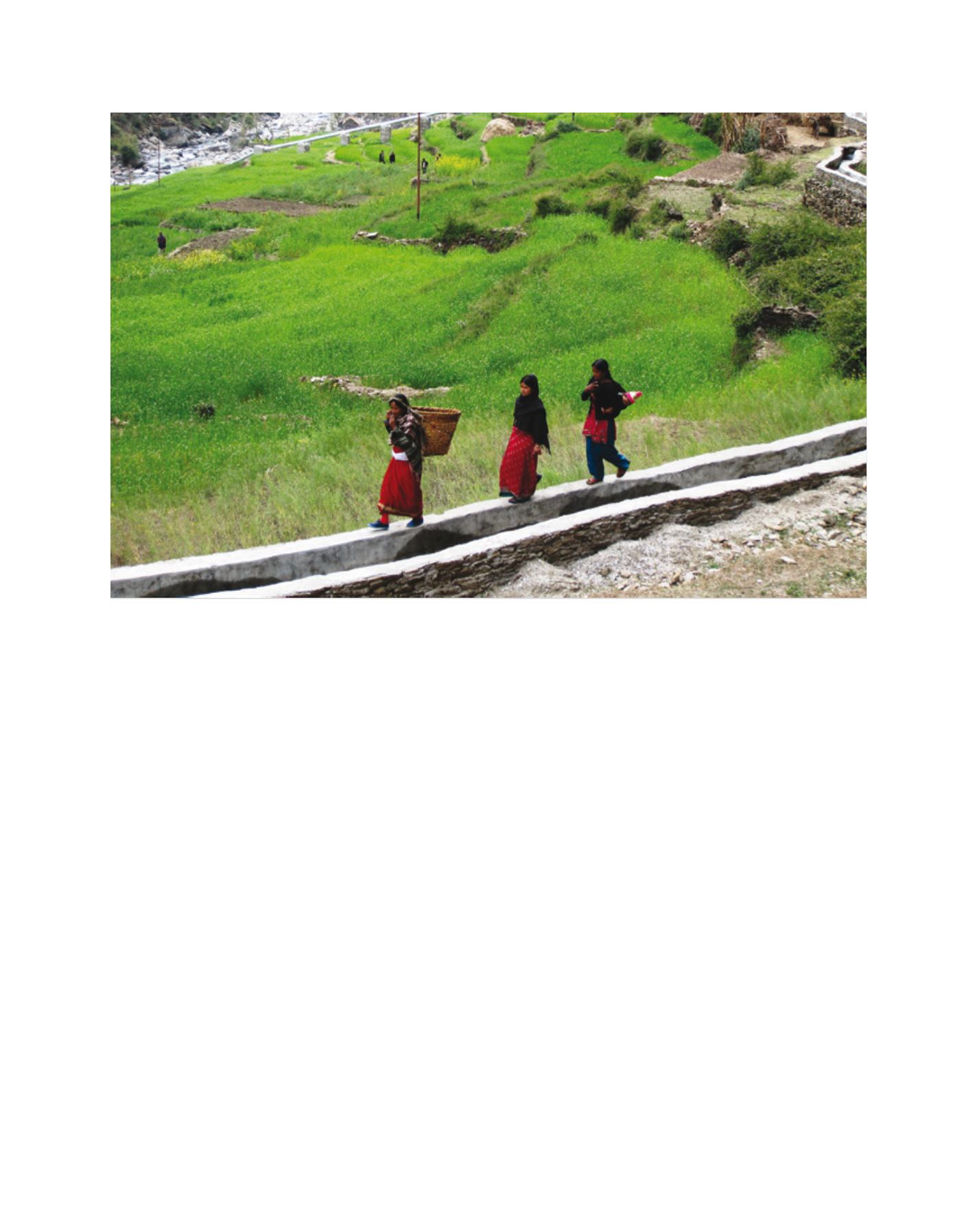

[
] 242
W
ater
C
ooperation
, S
ustainability
and
P
overty
E
radication
national recognition. It has made implementation four times faster
while making communities feel like owners, as well as significantly
improving the quality of construction. The key is to allow the
municipality (woreda) to assume its central role as supervisor,
while implementation responsibility lies with the community and
the financial flow is managed by a financial intermediary.
During 2007-2013 the two Finnish-funded projects in Ethiopia
have provided improved water supply and sanitation to some 1.2
million people at a cost of 36 cents per taxpayer per year. It has
improved hygienic and health conditions, lowered mortality and
improved children’s opportunities to go to school. Women have
also gained more time for productive purposes and family welfare as
well as for wider participation in social development. The approach
is also linked to the wider development objective of making admin-
istration more decentralized.
In Ethiopia, Finland has partnered with the World Bank Water
Supply Program (WB-WSP) with the aim of enhancing the utilization
of successful bilateral Finnish project-based experiences on a national
scale, such as institutionalization of the CMP model and establish-
ment of the One WASH National Program. Finland has also teamed
up with UNICEF to pool funding needed for the Capacity Building
Pooled Fund for WASH, which was established under the UNICEF
umbrella for the benefit of overall sector capacity development.
Kenya
Kenya has been one of the main partner countries of the Finnish
water sector. The Kenya Finland Cooperation rural water supply
project in Western Kenya was carried out in 1981-1996. In 2009
Finland returned as a supporter through the Water
Sector Trust Fund, partly initiated and influenced by
earlier Finnish support.
Nepal
The first bilateral water supply project (Lumbini) in
Nepal started in 1990 and consisted of several phases.
From its initial construction orientation, it developed
towards a more participatory approach involving promo-
tion of gender equity and participation of local NGOs.
The wealth of experience gained was valuable when the
Nepalese rural water policy was revised in 2004.
The Rural Water Supply and Sanitation Project
(RWSSP) in the Mid-West region of Nepal started in
2008 and is planned to continue until 2018. A variety
of implementing options and water and sanitation
technologies are being tested where the major imple-
menting responsibility lies at the village level. The role
of municipalities is mainly to support, follow, facili-
tate and build up village level capacities. The aim is to
develop a nationally applicable model where the local
government ensures democratic decision-making,
promotion of human rights and improvement of
women’s conditions.
In the Far West region of Nepal, the RWSSP started
in 2006. In addition to drinking water and sanitation, it
promotes small-scale hydropower and irrigation aimed
at improving food security. The project promotes tech-
An irrigation channel in the Bhatakatiya municipality of Far West Nepal, which also leads water to a 30 kW hydropower plant
Image: Sanna-Leena Rautanen


















